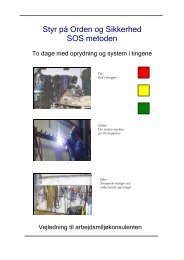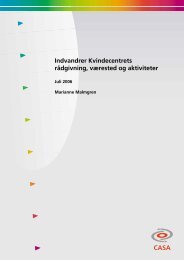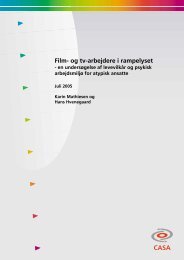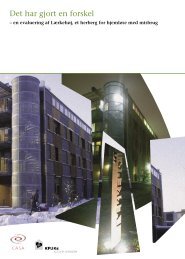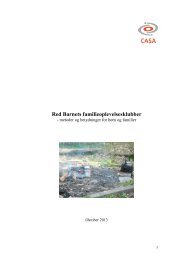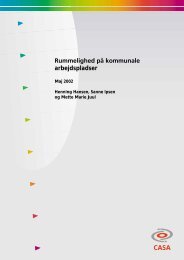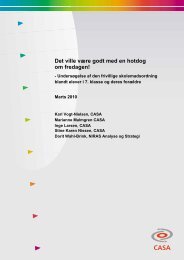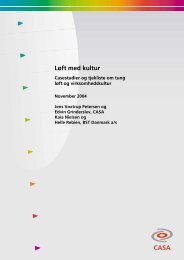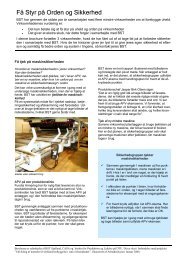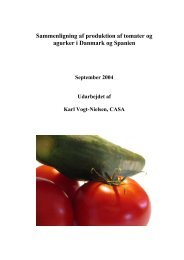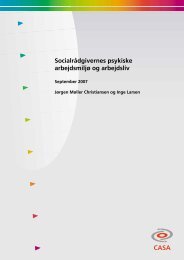Download rapport - Center for Alternativ Samfundsanalyse
Download rapport - Center for Alternativ Samfundsanalyse
Download rapport - Center for Alternativ Samfundsanalyse
You also want an ePaper? Increase the reach of your titles
YUMPU automatically turns print PDFs into web optimized ePapers that Google loves.
The sketch is based on three main themes that <strong>for</strong>m a central part of the riskcommunication.Strategic communicationThe initial steps in a case involving risks are decisive <strong>for</strong> the future process ofthe communication – not least because they enjoy considerable attention fromthe general public. The parties can either position themselves in relation toeach other as partners in an alliance or as opponents. This is why the strategiccommunication must be settled from the beginning.Establishment and re-establishment of credibility and reliabilityThe credibility of the authority – including its competency, honesty andopenness – is a crucial factor <strong>for</strong> the success of communication to the generalpublic. The credibility of the authority is the plat<strong>for</strong>m <strong>for</strong> communication.Unlike previously, public confidence in scientific institutions can no longer betaken <strong>for</strong> granted; it has to be won and recreated because it is no longer attachedto the science or the authority itself. Public confidence is often only onloan – when it is broken, it is lost. Credibility and public confidence is difficultto achieve, easy to lose and even harder to regain. Building up public confidenceand credibility takes place both during a specific case and between cases– i.e. in relation to the way the authority acts and communicates in general.Communication in the mediaTo a great extent, the media are “joint-creators” of messages, and they helpinfluence the general public’s picture of what should give cause <strong>for</strong> concern.The media is the place where claims about risks are made, tested and encounteredand, finally, put into political action.Some media will cover the case as objectively as possible with the aim of givingthe general public all the available in<strong>for</strong>mation. Others will undertake amore active part in the case and produce stories with a human-interest angle 2 ,encompass the views of the public, pose questions that suggest yes/no answersor certain/uncertain answers and put more emphasis on bad rather than goodnews.The role of the media in risk communication can be described in accordancewith the following two models:The in<strong>for</strong>mation model – the media are objective communicators of the “objective”risk from the authorities. The dialogue is characterised by short simplifiedmessages.The arena model – the media <strong>for</strong>m an arena <strong>for</strong> different perceptions of riskthat are debated in an open <strong>for</strong>um between all players. There is room here <strong>for</strong>broader messages.The media are not only messengers, however, they also have a commercialinterest. It is not only a question of neutral communication since the mediamay have their own messages to promote.An important and difficult task <strong>for</strong> the Danish EPA and other authorities isthere<strong>for</strong>e to create confidence in dialogue about cases involving risks on thebasis of the given premises.2Human-interest angle means that the media will feature a human approach to makemore people take notice and read the stories.22




